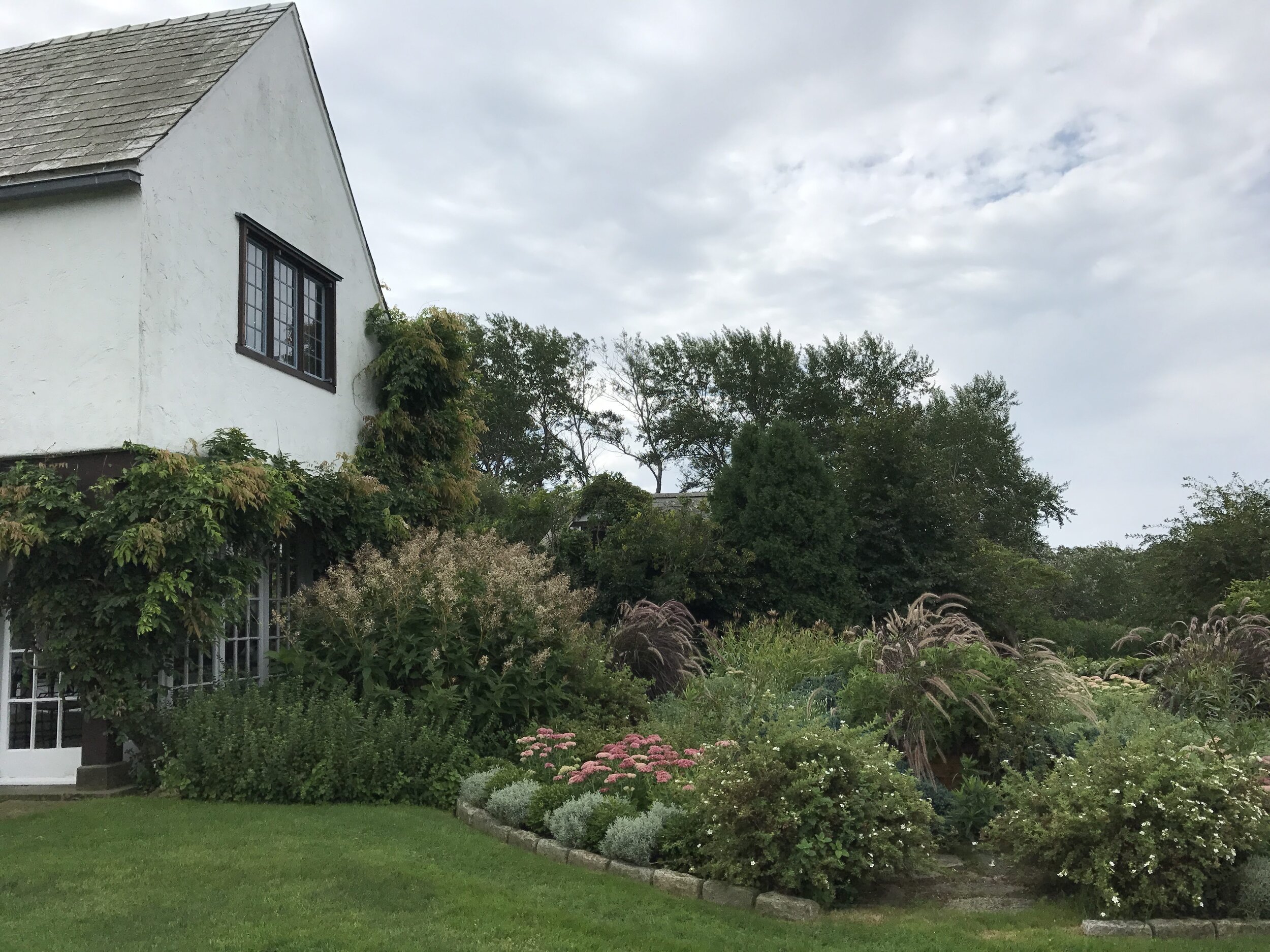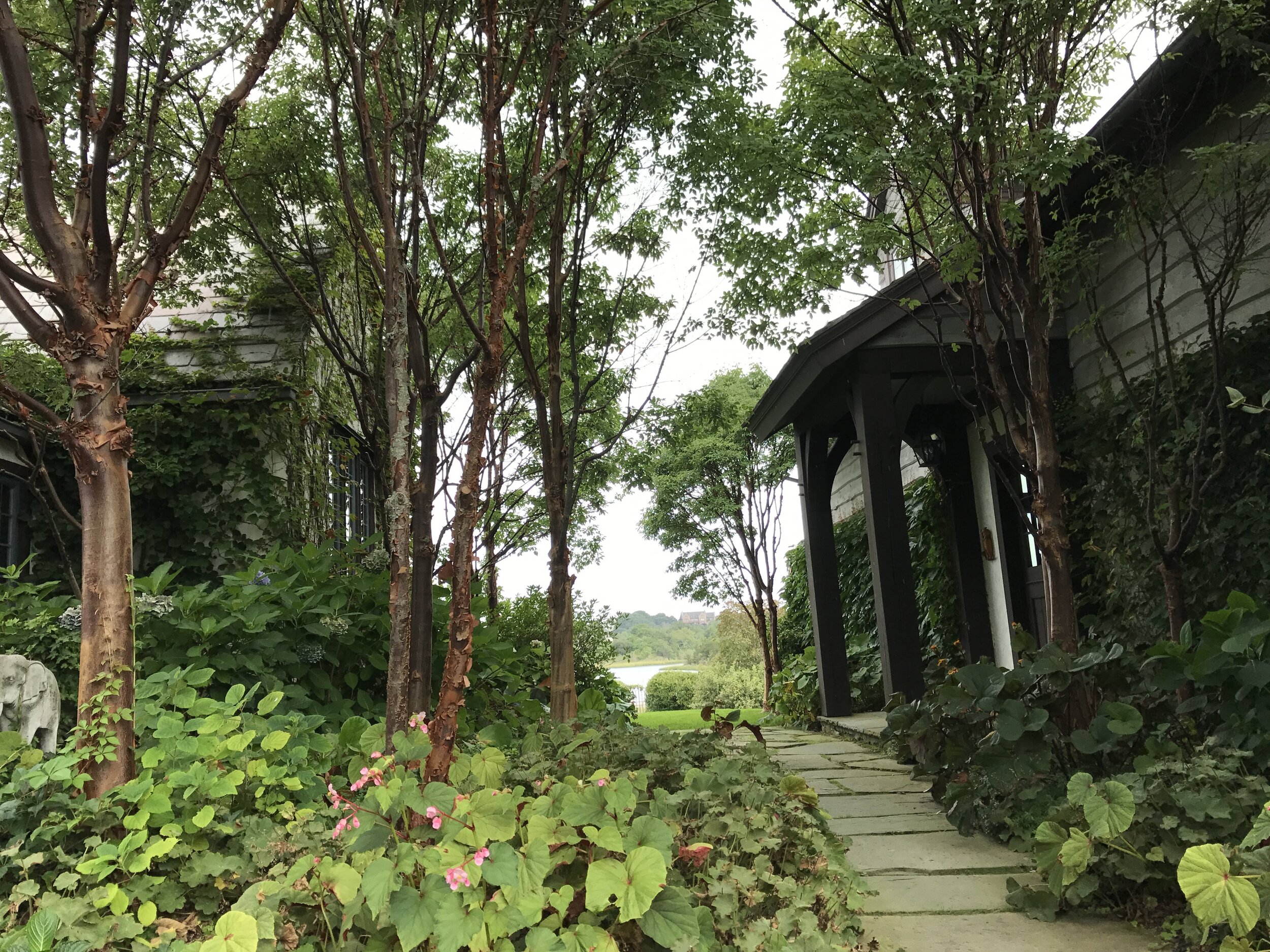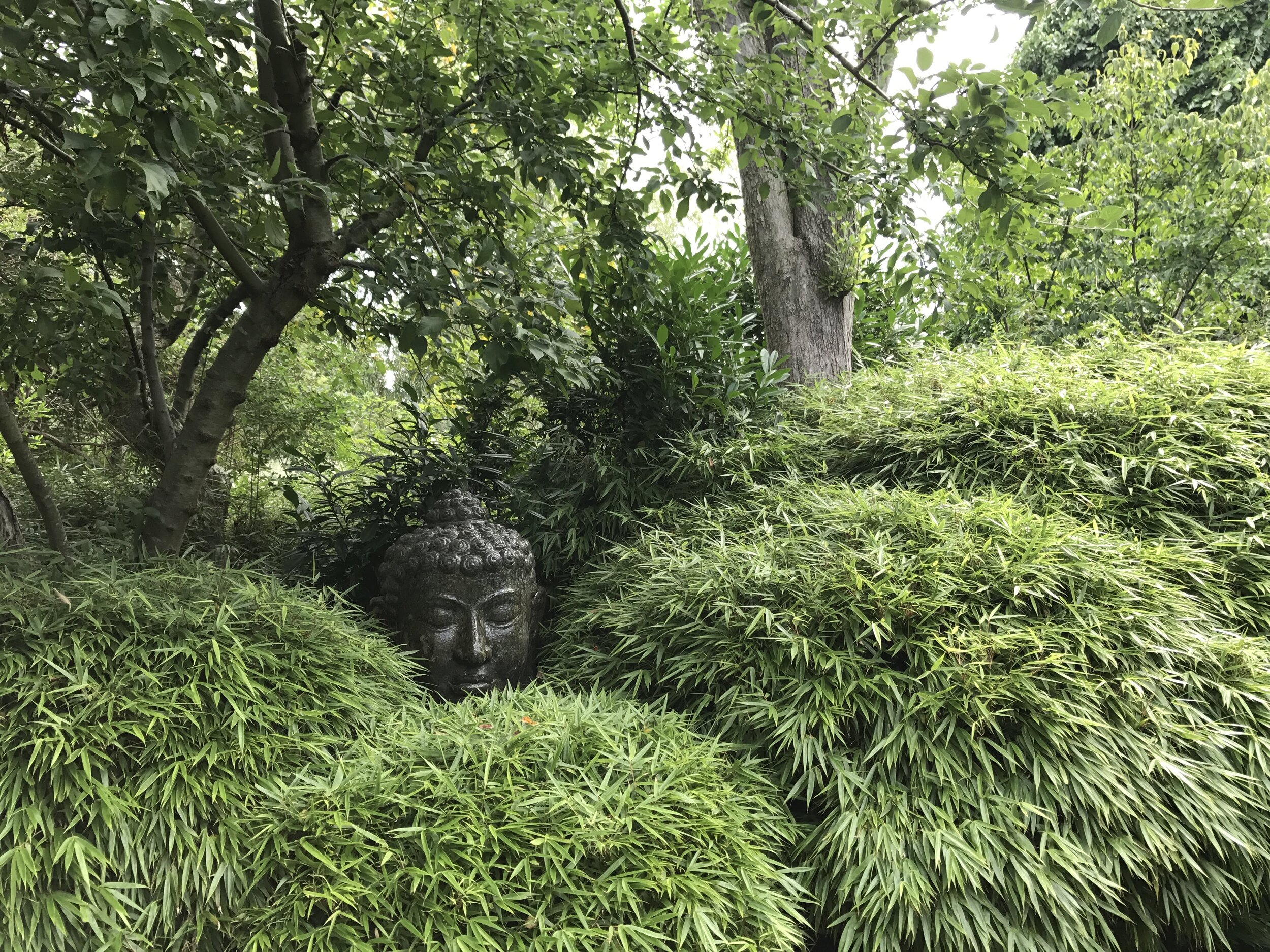
Salt Marsh Arboretum
The Property
Salt Marsh is a unique property surrounded by the restored salt marshes of Gooseneck Cove in Newport, Rhode Island. The house stands approximately fourteen feet above sea level, its landscape sloping down and away to meet the native salt marsh below. A portion of the native saltwater wetlands are maintained within the property, along with an incredible collection of woody and herbaceous plants.
The Collections
Estate gardener and manager, Devin Skelly, volunteered in the restoration of Gooseneck Cove Marsh in 2009 with Save the Bay; this experience, along with his own research, has equipped him to apply coastal marsh restoration techniques to the landscape. Salt Marsh has been successful in the removal of invasive plants, such as phragmites and purple loosestrife (Lythrum salicaria), as well as the replanting of native species such as smooth cordgrass (Spartina alterniflora), broadleaf cattail (Typha latifolia), swamp milkweed (Asclepias incarnata), shadbush (Amerlanchier canadensis), bayberry (Myrica pensylvanica) and others. These species along the salt marsh edges contribute to a rich coastal ecosystem, allowing for a harmonious and soft transition from native wetland into an anthropogenic cultivated landscape.
The Mission
A garden was designed that demonstrates an amazing intermingling of native ecosystems and cultivated gardens. The mission of Salt Marsh Arboretum is to maintain the diverse collection of woody species while continuing sustainable horticultural practices and the environmental stewardship of the surrounding saltwater marsh.
Special Features
PAPERBARK MAPLE GROVE
A grove of 17 paperbark maples, Acer griseum, shade the path where the original house meets a recently built addition. Known for its exceptionally slow growth, stunning exfoliating red bark, and unusual leaf characteristics, these trees are seldom seen planted in these numbers as their slow growth results in very expensive plant material. Each maple was hand-selected from Sylvan Nursery in Westport, MA.
BUCKEYE & HORSECHESTNUT COLLECTION
Four different Aesculus species crown the property, including Bauman Horsechestnut (Aesculus baumanii), Bottlebrush Buckeye (Aesculus parviflora), Red Buckeye (Aesculus pavia), and Red Horsechestnut (Aesculus x carnea ‘Briotii’).
POLLARDED CATALPA
A pollarded northern catalpa, Catalpa speciosa, graces the west side of the property. This catalpa is thriving under pollarding conditions, and the pollarded canes are reused as garden stakes.
VEGETABLE GARDENS
Salt Marsh’s collections include two lush vegetable gardens. One, overflowing out of a raised bed, is filled with vegetables such as summer squash and zucchini and many mixed flower varieties used for arrangements in the house. The other is seeded vertically on the sides of a contained compost pile.
ESPALIERED PEAR
An espaliered Anjou Pear, Pyrus comunis ‘Anjou’, climbs the southeast face of the house. One can open a window, reach down, and pluck a juicy pear from the vigorous branches below.
GIANT SEQUOIAS
Before Hurricane Sandy hit Rhode Island in 2012, Salt Marsh was home to a 55’ Giant Sequoia, Sequoiadendron giganteum. During the hurricane, a storm surge caused the marsh water levels to rise up to the property line, inundating large amounts of Salt Marsh’s plant collection with saltwater. Regrettably, the 55’ sequoia was not able to survive the storm and saltwater saturation, and was lost shortly after. Today, two young sequoias, Sequoiadendron giganteum and Sequoiadendron giganteum ‘Powder Blue’, sit in place of the lost giant. Giant sequoias are seen rarely in New England, as most New England states are colder than the hardiness range sequoias can typically survive. However, given the many microclimates found in coastal Newport, the right care and planting location can foster many beautiful cold-sensitive specimen trees.






